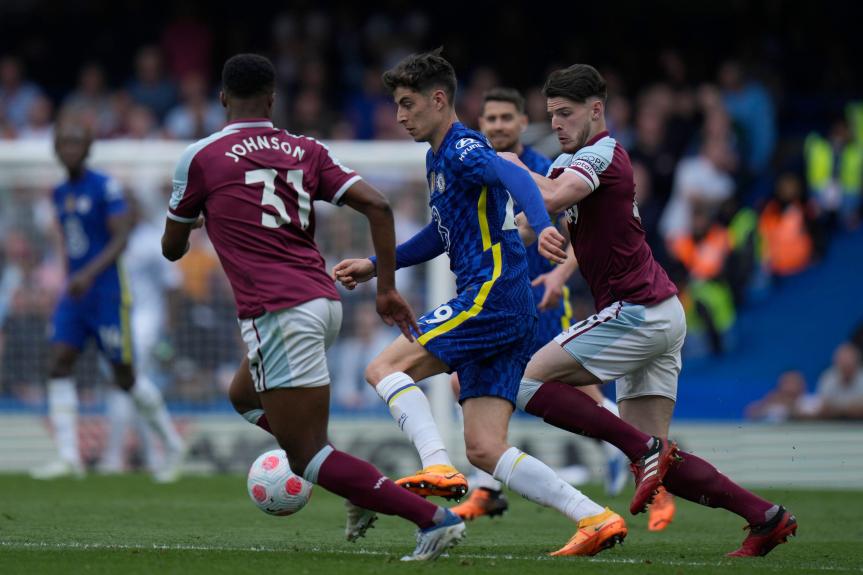ARSENAL have lost their place at the top of the Premier League and have tumbled out of the FA Cup at the first time of asking. They are, however, still in the UEFA Champions League and have a good chance of taking their European campaign further. Some die-hards are trying to talk themselves into crisis mode, but they are a little premature. They’ve hit a bad patch, for sure, but they have a few weeks before they can write-off their title bid.
It’s not Liverpool they need to worry about, or indeed Aston Villa, but reigning champions Manchester City. Liverpool could be without Mohammed Salah until mid-February if Egypt enjoy a lengthy run in the Africa Cup of Nations. Liverpool without their prolific striker are simply not the same side. City are still most people’s favourites and there’s no talk about any desperate need to reinforce their squad.
Arsenal, like so many teams today, need a striker. There’s rumours they’re interested in Brentford’s Ivan Toney and Napoli’s Victor Osimhen, but while the former may turn out to be rusty, the latter has just signed a new contract and will cost a huge fee. Osimhen has not had such a spectacular season with Napoli due to injury and a disagreement with his club. However, his performances in 2022-23 mark him as a special talent.
Something has gone wrong and repairs are needed soon otherwise Arsenal will be scrambling to retain their top four place. Since December 1, Arsenal have won three of nine games and they have lost their last three league and cup fixtures, including a 2-1 defeat at Fulham and a home derby with West Ham United. It was the West Ham game that highlighted some of Arsenal’s problems; they carved out 30 shots on goal and only eight were on target. They lost 2-0, despite enjoying 74% of possession. In their last seven league starts, Arsenal have had 136 shots of which 31% were on target. This is lower than Liverpool (36%), Manchester City (35%) and Aston Villa (33%). While the difference may appear minimal, it is also very tangible given the small margins between success and failure in football.
Invariably, Arsenal have a higher rate of possession than their opponents, but finishing has been poor – in their past three defeats, they have managed to get 26% of their chances on target.
Since Mikel Arteta took over in December 2019, Arsenal have won 57% of their games, a very decent percentage. But they have had barren periods in that time. In 2020-21, for example, they lost eight of their first 14 league games, while in 2021-22, they started badly and ended with five defeats in 10. In 2022-23, their best campaign under Arteta, they were top as late as May 1. They lost only six league matches but Manchester City demonstrated to the title pretenders their strength with two victories late in the season against the Gunners.
To their credit, they brushed the disappointment of blowing the title well and in 2023-24, they have topped the table again and were brimming with confidence until recently. There has been investment in the team and in the summer, they spent close to £ 200 million on Declan Rice, Kai Havertz and Jurrien Timber. Rice has settled, Havertz had shown some nice touches, but is not an out-and-out striker, but they lost Timber early on to injury. The Arsenal squad that played against Liverpool cost over half a billion pounds and that didn’t include the likes of Gabriel Jesus.
Inevitably, Arteta is coming under some pressure at present, but it is far too early to start questioning the coach. A short while ago, he was being idolised for the way he had turned Arsenal into challengers. He’s not everyone’s choice and increasingly doesn’t seem very user friendly, but he proved his doubters wrong a couple of years back when it looked as though Arsenal were going nowhere. Likewise, the Arsenal owners came under fire three years ago, with “Kroenke out” graffiti appearing just around the corner to the stadium. Those critics have mostly been silenced, but it won’t take long for a revival of #ArtetaOut and similarly intense social media pleas for the board to spend.
Much will depend on how Arsenal strengthen their squad in the current transfer window. They paid a record £ 100 million for Declan Rice and they will need to shop at the same store for players with that type of price tag. Once a club dips its toes into the expensive pool, there is pressure to return to that market to demonstrate their ambition and status. If nothing else, a new striker will make such a huge difference to Arteta’s squad.


